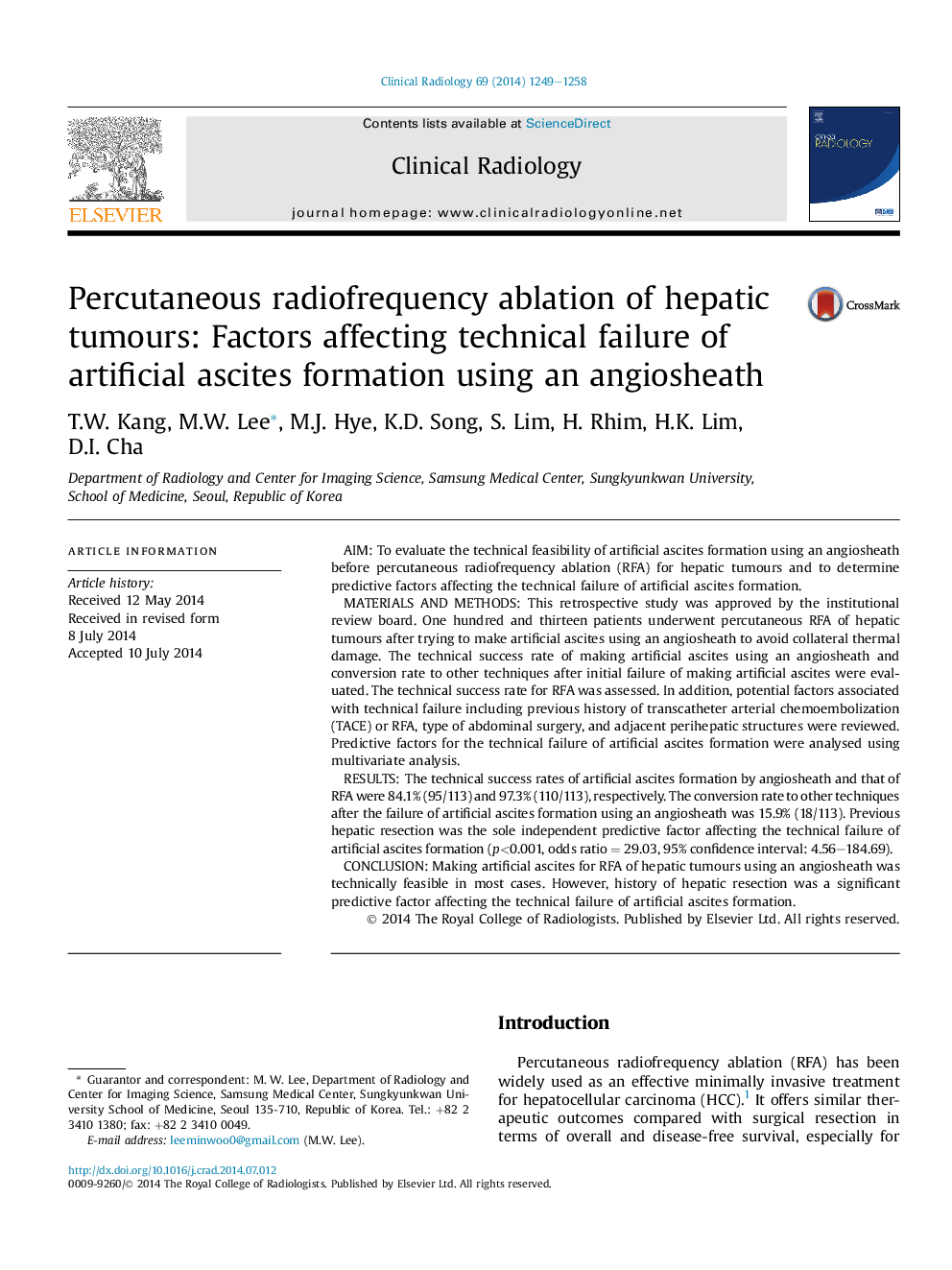| Article ID | Journal | Published Year | Pages | File Type |
|---|---|---|---|---|
| 3981651 | Clinical Radiology | 2014 | 10 Pages |
•Making artificial ascites (AA) using an angiosheath is feasible (84.1%, 95/113).•However, previous hepatic resection was the factor for the technical failure of AA.•All technical failures of RFA occurred when the index tumour was abutting the colon.
AimTo evaluate the technical feasibility of artificial ascites formation using an angiosheath before percutaneous radiofrequency ablation (RFA) for hepatic tumours and to determine predictive factors affecting the technical failure of artificial ascites formation.Materials and methodsThis retrospective study was approved by the institutional review board. One hundred and thirteen patients underwent percutaneous RFA of hepatic tumours after trying to make artificial ascites using an angiosheath to avoid collateral thermal damage. The technical success rate of making artificial ascites using an angiosheath and conversion rate to other techniques after initial failure of making artificial ascites were evaluated. The technical success rate for RFA was assessed. In addition, potential factors associated with technical failure including previous history of transcatheter arterial chemoembolization (TACE) or RFA, type of abdominal surgery, and adjacent perihepatic structures were reviewed. Predictive factors for the technical failure of artificial ascites formation were analysed using multivariate analysis.ResultsThe technical success rates of artificial ascites formation by angiosheath and that of RFA were 84.1% (95/113) and 97.3% (110/113), respectively. The conversion rate to other techniques after the failure of artificial ascites formation using an angiosheath was 15.9% (18/113). Previous hepatic resection was the sole independent predictive factor affecting the technical failure of artificial ascites formation (p<0.001, odds ratio = 29.03, 95% confidence interval: 4.56–184.69).ConclusionMaking artificial ascites for RFA of hepatic tumours using an angiosheath was technically feasible in most cases. However, history of hepatic resection was a significant predictive factor affecting the technical failure of artificial ascites formation.
